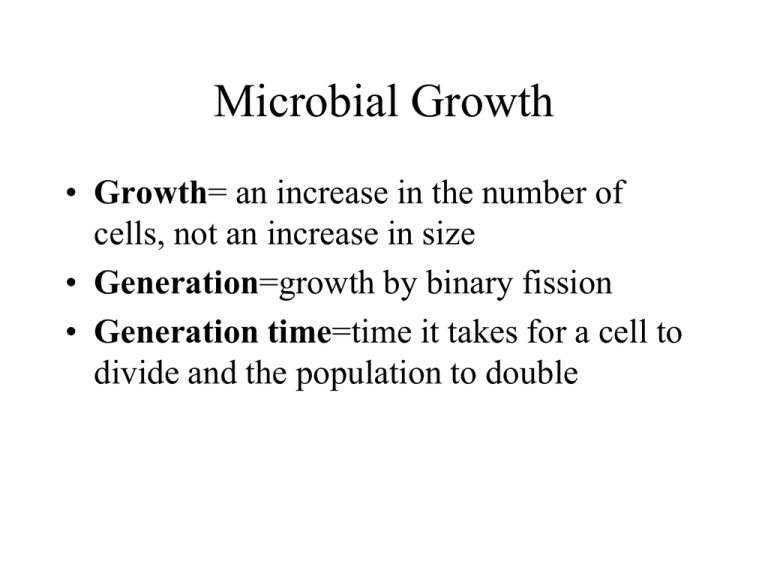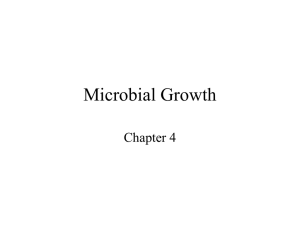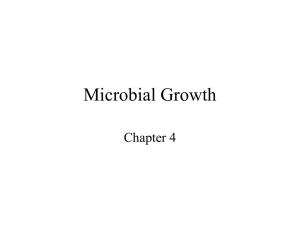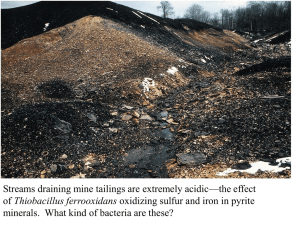Microbial Growth Growth cells, not an increase in size Generation
advertisement

Microbial Growth • Growth= an increase in the number of cells, not an increase in size • Generation=growth by binary fission • Generation time=time it takes for a cell to divide and the population to double Bacteria divide by binary fission Biofilms are communities of bacteria Generation times vary for each organism • E. coli • Staphylococcus aureus • Mycobacterium tuberculosis Why is generation time important? • Food? • Infections Bacterial growth curve Primary and Secondary metabolites Requirements for bacterial growth • Environmental factors that influence – Temperature, pH, osmotic pressure, oxygen • Nutritional factors – Carbon, nitrogen, sulfur, and phosphorous – Trace elements • metals Optimum Growth Temperatures • Psychrophiles– optimum -5 to 15oC • Psychrotrophs– range from 20-30oC • Mesophiles– range from 25-45oC • Thermophiles– range from 45-70oC pH influences the growth • Bacteria-prefer a pH range of 6.5-7.5 • Molds prefer a pH range of 5.0-6.0 Osmotic environment influences growth • Salt concentrations are important for the class of bacteria termed Halophiles. Oxygen preferences of organisms • Obligate aerobes • Facultative anaerobes • Obligate anaerobes Why can some organisms grow in the presence of oxygen? Why can some organisms grow in the presence of oxygen? • Toxic forms of oxygen need to be neutralized by enzymes – Superoxide dismutase – Catalase – Peroxidase Oxygen Preferences of Bacteria Candle jars increase CO2 levels for growing capnophiles Anaerobic jars eliminate the oxygen for anaerobes to grow. Chemical requirements: Carbon • What are possible sources of carbon? • Bacteria are classified based on the source of carbon as either heterotrophs or autotrophs Classification based on Energy and Carbon sources Chemical Requirements: Nitrogen • Why do bacteria need nitrogen? Chemical requirements: Sulfur and Phosphorous • Why do bacteria need sulfur? • Why do bacteria need phosphorous? Chemical requirements: trace elements • Small amounts of minerals • Usually function as cofactors Culture Media • Chemically defined – GSA Chemically defined media Culture Media • Complex – Nutrient Agar – TSA – BHI Culture Media • Selective • Differential – Blood • Selective and Differential – EMB Ways to measure bacterial growth • Direct Count • Plate Count/Viable Cell Count • Measure Turbidity Direct Counts Plate counts require dilutions Two techniques for plate counts Turbidity gives a rough estimate




